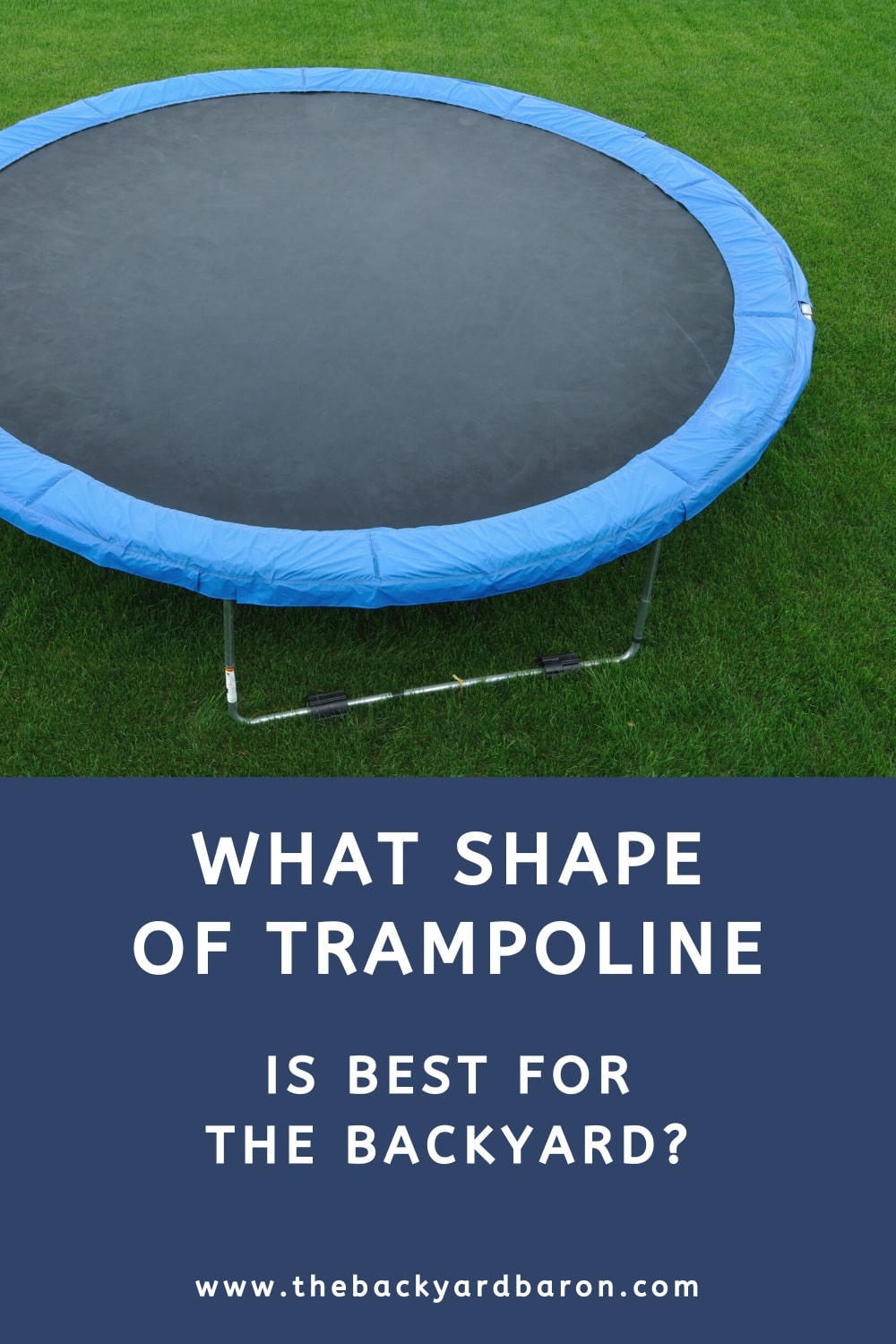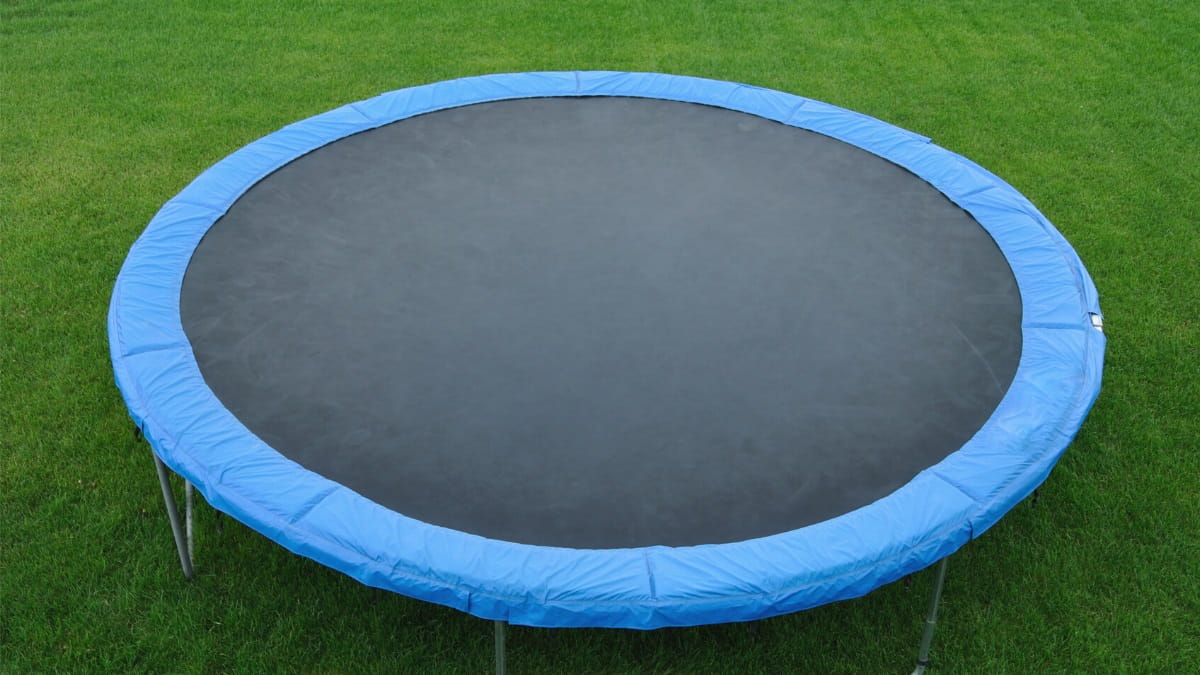Last updated: February 21, 2024
This guide explains the differences between round, square, rectangular, and oval trampoline shapes and the pros and cons of each.
Having a trampoline in the backyard is nothing unusual these days, but many people don’t consider the shape of a trampoline when purchasing one.
In the early days, many trampolines were rectangular, but as trampolines evolved, consumers can now choose between various trampoline shapes and sizes.
In this article, I will walk you through these different trampoline shapes, and I will share the pros and cons of each to help you make an informed decision.
Quick navigation:
Choose the Best Trampoline Shape
Trampolines have come a long way since they were first used in the 1930s to train astronauts and to support with training for different sports such as gymnastics.
It’s hard to beat the euphoric feeling you get from exercising or simply jumping around on your trampoline unit. Trampoline jumping is a full-body workout and triggers a sense of happiness.
Each trampoline model has its own unique features. From frame strength and safety features to weight limits, size, and bounce quality, consumers interested in purchasing a trampoline should know what their particular needs are when researching the ideal trampoline.
To compare and contrast the benefits and drawbacks of the four primary trampoline shapes (round, square, rectangular, and oval), I have put together this guide to help with your purchasing decision.
1. Round Frames
When people think about trampolines, the round shape usually comes to mind first. And a majority of consumers will indeed find the round shape perfectly suitable for their needs. However, it’s important to note that the round shape limits the so-called “sweet spots” in a trampoline to one location: the center of the circle.
The round trampoline is ideal for use by a single jumper. Since all the springs converge in the center, a solitary jumper will find the best bounce from a round model. Also, jumpers will get pulled back into the sweet spot in a round trampoline because of the springs’ centripetal force, which rounds the surface’s perimeter.
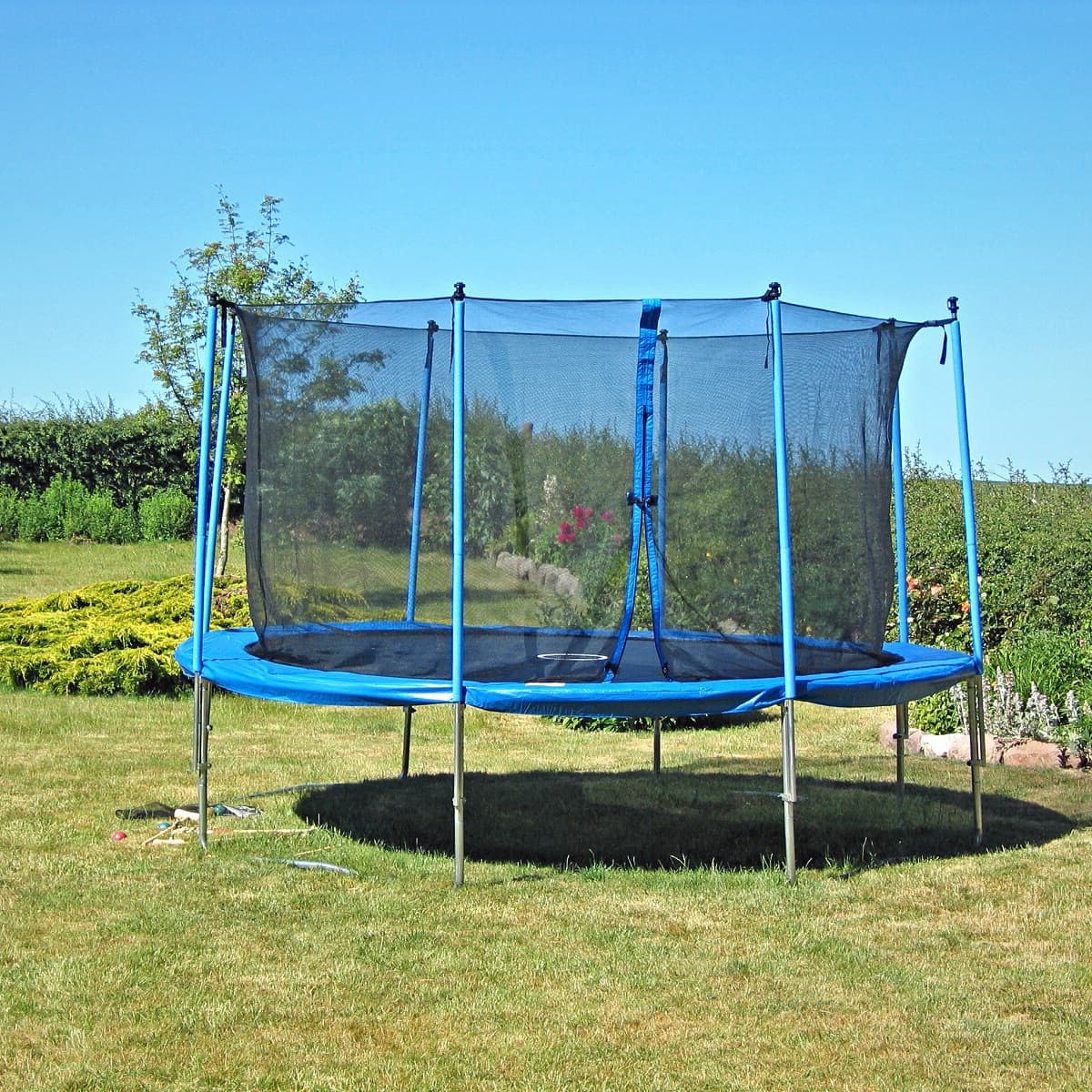
If more than one person is jumping on a round trampoline, the bounce’s pull toward the center can result in potential collisions. This risk will increase if jumpers have different weights.
Oval-shaped trampolines might be the better choice if you’re expecting to have two kids wanting to jump at the same time. An oval shape extends the surface area of a circular trampoline while maintaining its centrally-pulling effect. That means you have more sweet spots, a greater weight capacity, and more space for jumpers.
If your trampoline’s weight is essential, the circular models are some of the lightest on the market. One person can quickly assemble this trampoline in the backyard or move it from one spot to another.
2. Square Frames
Although the square trampoline may not be a buyer’s favorite, you might be surprised to find that the square shape has various benefits that circular models don’t have.
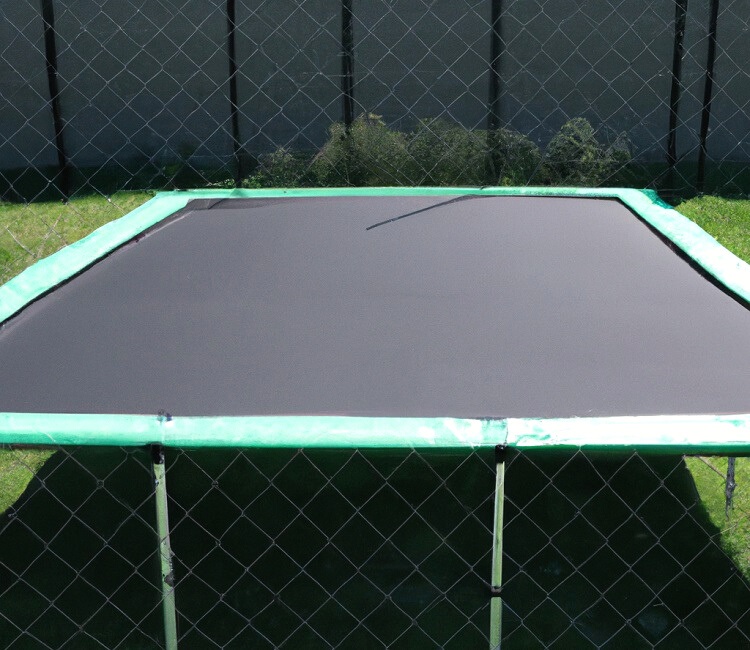
Square and round trampolines have some notable differences in performance and structural integrity that buyers should be aware of:
- Square shapes usually cost more than circular and oval shapes.
- The price of square models will top circular models, primarily due to the increased material cost of the square base.
- Square shapes also add sturdiness and support compared to round models.
- Rigid square frames also offer an increased weight tolerance.
- Square frames typically offer more security than cheaper, more popular circular frames.
It’s also important to visualize where you would want your trampoline to be located on your property.
If you have limited space, you might find that a square model takes up more space than a round model. However, fitting a square trampoline in a corner is easier than a round model.
3. Rectangular Frames
If you’ve ever watched the Summer Olympics, you will know that the rectangular trampoline is the shape used by gymnasts.
Original trampolines were manufactured in rectangular shapes because they guarantee the most powerful rebound and jumping height. If you’re looking for maximum jumping height, the rectangular model is the shape for you.
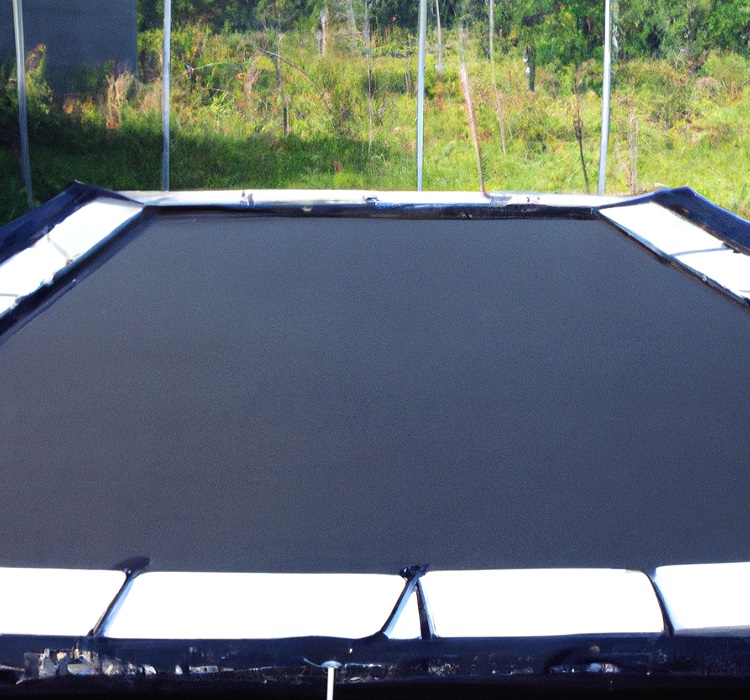
The rectangular shape proved to be very successful at creating a consistent bounce when the user landed in the central “sweet spot”. Still, when they landed anywhere near the edges, the bounce was inconsistent.
Compare the “sweet spot” between rectangular trampolines and round models. The first priority is the surface size. With an increased jumping surface, you multiply the jumping height. Rectangular trampolines typically generate a greater jumping height than comparable circular models.
The spring mechanics also work differently between a circular and rectangular trampoline. With a rectangular trampoline, there is less stress on the springs than with a circular model, allowing jumpers to jump higher without feeling the pull to the center of the mat.
Rectangular models are also preferred when you have multiple jumpers since there is less of a risk of collision. Jumpers can spread out on the trampoline surface and displace tension without affecting one another too much.
4. Oval Frames
While circular trampolines have dominated the recreational market for quite some time, oval-shaped trampolines are increasing in popularity, and for good reasons. They offer a safer overall surface area and more jumping space than round trampolines, and they also provide an improved jumping height.
Oval trampolines are essentially a mix of rectangular and round trampolines. This means that an oval trampoline will suit buyers looking for jumping performance and buyers who prefer safety and a secure frame.
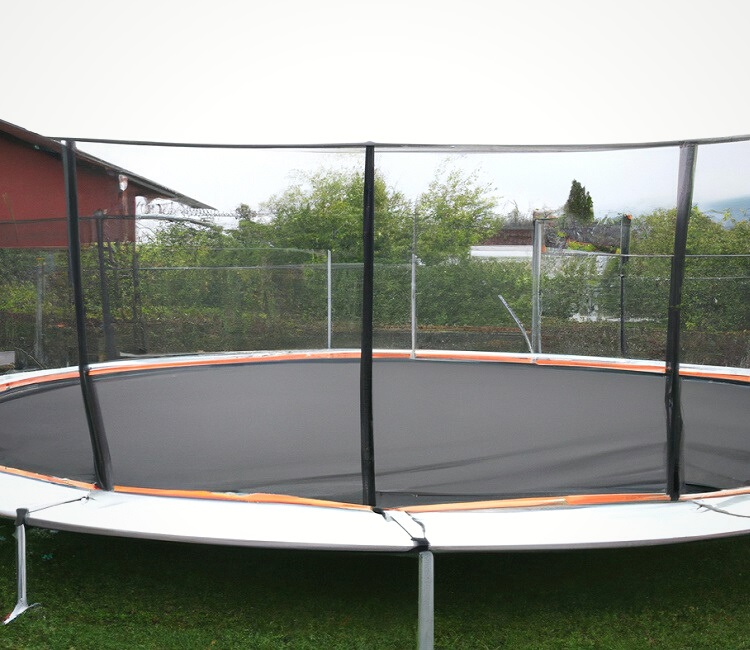
The oval shape basically allows for two distinct “sweet spot” areas. Instead of having that strong central pull, oval trampolines allow multiple jumpers to experience a decent bouncing experience at both ends of the oval surface area. Collisions are also less likely to occur on oval trampolines versus circular models.
Another benefit of an oval trampoline is its aesthetic appeal, although this is obviously a personal choice. You might also find that the oval shape fits better into the corners of a yard or garden without wasting too much space.
Note that oval-shaped trampolines are a bit harder to find than round or rectangular trampolines, as they’re still not as popular in the US as other shapes. If you are set on an oval model and your backyard will fit one, there are certainly trampoline models to be found online.
More trampoline resources:
Final Thoughts
If you’re in the market for a new backyard trampoline, the choices out there are enormous. It can be challenging to prioritize safety over jump height or material integrity over portability. In the end, you have to decide what is most important for the users of your trampoline.
Generally, square and rectangular models will typically be more robust than circular and oval models. On the other hand, circular models sell at a lower price point and offer more portability than bulkier square trampolines. For domestic backyard use, a round or oval-shaped trampoline is often the most logical choice.
Be sure to compare price, usage, weight limitations, safety, and bounce quality when researching the ideal trampoline shape and size. Hopefully, with the help of this guide, you are now equipped with the essential knowledge to pick a trampoline that best fits your requirements.
